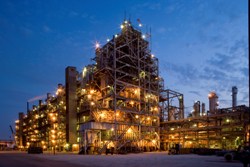US chemical group sees slow 2012 improvement, led by shale gas
Despite a slowdown in the US economic recovery, the outlook for the nation’s chemicals manufacturing industry is more encouraging, according to the American Chemistry Council’s (ACC) 2011 Year-End Situation and Outlook published this week.
The ACC says gradual improvement will occur in 2012, before a stronger recovery takes hold in 2013.
Most major end-use markets for chemistry have recovered in the US, helping to maintain the $720 billion industry’s contribution to 26% of US gross domestic product (GDP).
 The key to the domestic chemical industry’s recovery is access to vast, new supplies of natural gas from previously untapped shale deposits, the council says.
The key to the domestic chemical industry’s recovery is access to vast, new supplies of natural gas from previously untapped shale deposits, the council says.
After years of high and volatile natural gas prices, the new economics of shale gas are creating a competitive advantage for US manufacturers, leading to greater investment, job creation and industry growth.
“For the first time, America’s economic outlook indicates a two-speed manufacturing recovery. Most major end-use markets for chemistry in the United States have recovered, though growth has slowed for overall US manufacturing,” said Cal Dooley, ACC president and CEO.
Dooley also noted that while developed nations, constrained by debt and tighter fiscal policies, are likely to expand chemistry production only moderately, output from emerging markets will increase more rapidly.
“The shale gas production boom is moderating natural gas prices and creating more stable supplies, which has allowed US chemical manufacturers to become more competitive with producers abroad,” Dooley added.
The Shale Gas Revolution
Ethane, a natural gas liquid derived from shale gas, is used as a feedstock by American chemical companies. Affordable natural gas and ethane give US manufacturers an advantage over global competitors that use a more expensive, oil-based feedstock.
Historically, an oil to natural gas price ratio of 6:1 or higher increases the global competitiveness of Gulf Coast-based petrochemicals and derivatives such as plastic resins. For the last several years this ratio has been above 7:1, but more recently the high ratio of oil to natural gas prices has been over 25:1, helping to spur capital investment in North America.
An earlier ACC study projected domestic petrochemical investments of approximately $16 billion related to reasonable increases in ethane supplies.
Looking at the broader chemical industry, capital investment is expected to exceed $25 billion, further fueling economic and job growth.
“To sustain the recovery’s momentum, we need sound economic, energy and environmental policies that will encourage the growth of America’s manufacturing sector,” Dooley said.
Emergence of a Two-Speed Manufacturing Sector
Despite the subdued year, most major end-use markets for chemistry have recovered in the US, especially those tied to export markets and business investment.
The boom in oil and gas is creating both demand-side (e.g., pipe mills, oilfield machinery) and supply-side (e.g., chemicals, fertilizers, direct iron reduction) opportunities and this is likely to continue, the ACC said.
There is also strength in light vehicles and aircraft, a recovery in construction materials, and industries involved with business investment (iron and steel, foundries, computers, etc.) are still strong.
In contrast, growth lags in a number of industries including textiles, paper and printing, indicating the emergence of a two-speed manufacturing sector, with about one-half of industries soft and others doing well.
Looking Forward
The two-speed manufacturing industry will be mirrored in global prospects where developed nations grow slowly while the emerging markets grow rapidly as a result of industrialization and rising consumer-driven economies. This trend will continue.
Along with favorable energy dynamics and a weaker dollar, the strong growth overseas will aid US chemical exports in the years to come.
The outlook for chemicals points to modest growth over the next several years and depends on strengthening domestic demand and an improvement in exports abroad.
Exports were up nearly 11% to $189 billion in 2011 and are expected to exceed $230 billion in 2014, the ACC said.
For more details on the ACC’s year-end outlook, click here.






Comments